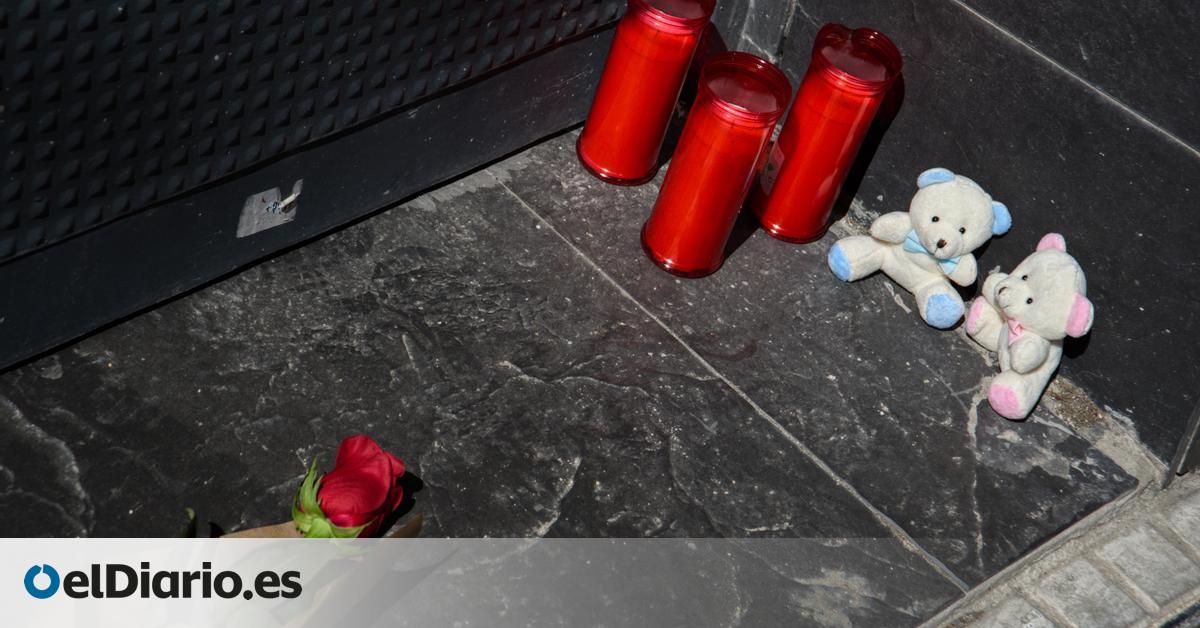
Not even four months have passed since the year started and 2024 has already become one of the deadliest for the sons and daughters of victims of sexist violence. The Mossos d’Esquadra are investigating the case of the two eight-year-old children found dead this Tuesday with their mother at their home in El Prat de Llobregat (Barcelona). The main hypothesis is that the children’s father killed the three and then committed suicide on the train tracks. Although it is still being investigated, the triple murder has set off all the alarms about a type of crime that has reached 55 in the last decade and is the most extreme expression of sexist domination.
With this last case, which has already been confirmed by the Government Delegation against Gender Violence, there are seven the number of minors murdered for this reason so far in 2024. Almost the same figure as the worst year since there are records .
Only one, 2017, surpassed it with eight cases recorded, while in 2015, 2018 and 2021 there were also seven. Of course, in 12 full months. Never before at this time of year since 2013, the first in which official statistics began to be collected, has such a high number been recorded.
The case of El Prat joins three others. On April 3, a man was arrested in a municipality of Girona for having killed his five-year-old son and seriously injured his mother. A little more than two weeks had passed since the previous one, in Gérgal (Almería), where a man with a protection order on his ex-partner killed his two daughters, aged two and four, during a visitation regime. According to the autopsy report, he poisoned them. The first of the year occurred on January 8, when Xavi, ten years old, and Noa, seven, were murdered by his father in Barcelona to take revenge on his ex-partner and the girls’ mother. Only in the case of Almería was there a prior complaint.
Doing the greatest possible damage to women is the objective with which there are men who exploit their children and even end their lives. This is what is known as vicarious violence, a term coined by forensic psychologist Sonia Vaccaro that aggressors usually use when they have decided to separate or report. “Abuse involves a whole pattern of violent behavior with the intention of controlling women and in some cases even being able to use their children to maintain this control,” says Olga Barroso, a psychologist specialized in sexist violence.
However, not all cases of deaths of minors at the hands of their parents are vicarious violence. What they all respond to is a context of sexist violence; That is, their mothers are victims of abuse by their partners or ex-partners, but in some cases, such as that of El Prat this Tuesday or that of Carabanchel (Madrid) last November, one of the two that occurred in 2023 , the murders are multiple and the attackers also end the lives of the women. As analyzed by the General Council of the Judiciary, being a mother is a factor of vulnerability to violence, something that estimates up to 75% of fatalities.
They are men who treat women and their children as if they were their property and believe they have the right to decide about them.
Maria Naredo
— jurist specialized in sexist violence
The experts agree that, after all the cases, what emerges is a context of domination. Whether vicarious violence or not, they are all “gender murders”, as the former Government delegate against Gender Violence, Victoria Rosell, has described them, which aim to “exercise power and demonstrate superiority”. Deep down “underlys a social and judicial patriarchy” that precisely crystallizes in the figure of the landowner in its deepest meaning: “They are men who treat women and their children as if they were their property and believe they have the right to decide about them,” explains the jurist specialized in sexist violence, María Naredo.
The Minister of Equality, Ana Redondo, has described the accumulation of these crimes in this first quarter of the year as “an unbearable reality that challenges us daily” and has pointed out the need to “make a diagnosis.” “It is possible that there is a variation in the reaction of the sexists” because “whenever there is progress in feminist equality there is a contrary reaction,” added Redondo, who points to the need to “reinforce measures and ministerial coordination.” ”. For her part, the Minister of Equality of the Generalitat has announced the creation of a working group to analyze the latest cases in Catalonia.
A “gap” between the law and its application
The record of cases of sexist violence against sons and daughters of victims this year coexists with a legal framework that has advanced in recent years, experts agree. However, in his opinion, there are still steps to ensure compliance. A paradigmatic case was that of Almería last March: the man had a restraining order against his ex-partner, but he continued to see the girls on Saturdays and Sundays for a few hours. The deliveries had to be made at a Family Meeting Point, a measure that the court ended up abolishing because the mother had requested it on several occasions. During one of the visits, the man killed his daughters.
“We must take extreme protection measures with children. It is impressive that there continue to be cases of mothers with protection orders whose sons and daughters continue to see their father and then those who choose to act outside the legal framework to protect them are condemned,” laments Naredo, who believes that there is “a very large gap.” ” between legislation and its application. “When we talk about children exposed to violence, they have to be in the photo in the foreground. “Their care and protection should be a priority and it is not.”
Although there has been a comprehensive law against gender violence since 2004, it did not incorporate minors until just two years ago and it was not until 2015 when a legislative text recognized that these minors are direct victims of abuse. In 2021, the Law for the Protection of Children and Adolescents against Violence (LOPIVI) took a key step and established that when there are “founded indications” that children had “witnessed, suffered or coexisted” with violence, the judge must suspend visits, a forecast that has increased these decisions but they are still a minority: in 2020 it was only applied in 3% of cases while the figure rose to 12% last year.
The exception to the general rule, that is, that visits are maintained, can only be dictated by “a resolution motivated by the best interests of the minor and after evaluating the situation of the parent-child relationship.” Cira García, judge of the Court of Violence against Women No. 1 of Getafe (Madrid) believes that, in reality, the trend continues to be to grant visits: “In the judicial imagination, unless there is significant training in gender and childhood, it is usually thought ‘How can I leave this child without seeing the father?’ We continue to think that visits are the father’s right when in reality the right is that of the child, to interact with a parent who is not violent.”
How to assess risk
The specialists are committed to focusing on how the assessments are going and, above all, whether they are being done. In the case of Almería, for example, it is unknown what the court relied on. “We must ask ourselves whether or not there is a gender perspective, if we know how sexist violence works and if in the investigations we are capable of revealing the context of power behind it. And of course, listen to the boys and girls with guarantees,” says Naredo.
García believes it is key that the evaluations “are not made only with the mother’s statements,” whose testimony can sometimes be influenced by the dynamics of violence itself, and is committed to “changing the focus.” To do this, he thinks it is necessary to develop specific police risk assessment instruments for boys and girls, which do not currently exist. “In the assessment made for women there are items that refer to them, but they do not have their own. Furthermore, we need psychosocial reports that do not take a year to issue and that are done by personnel specialized in gender violence,” he adds.
Even so, almost nothing ends and begins in the judicial field. And the fact is that the vast majority of victims never report the violence they suffer. So far this year, only 22% of murdered women have done so. For this reason, Naredo points out the importance of “detecting and intervening” in gender violence from other areas to which women do or do have access, such as health centers, social services or educational centers. Furthermore, what many of these women end up doing is escaping the violence through divorce, a time in which the family courts “can and should analyze the situation and suspend visits without the need for a complaint” because the law speaks of “indications”.
Beyond the extreme expression that is murder, all the experts agree in pointing out how vicarious violence is usually present in the lives of boys and girls whose mothers are victims. “A lot of violence goes unnoticed in everyday life. How many mothers report that when they are with them they do not let them call them? How many times that the parent continually speaks badly to the child about them? How many of them come home from the weekend with him with dirty clothes?” exemplifies the judge, who points in one direction: “The biggest problem with this violence is that the boys and girls are made invisible; “We must stop treating them and seeing them as an appendage of their mothers.”
Graphic prepared by Victòria Oliveres.
—–
016 assists all victims of sexist violence 24 hours a day and in 53 different languages, just like the email [email protected]; Assistance is also provided through WhatsApp through the number 600000016, and minors can contact the ANAR Foundation telephone number 900 20 20 10.
In an emergency situation, you can call 112 or the numbers of the National Police (091) and the Civil Guard (062) and if you cannot call you can use the ALERTCOPS application, from which a message is sent. Police alert signal with geolocation.
Source: www.eldiario.es

